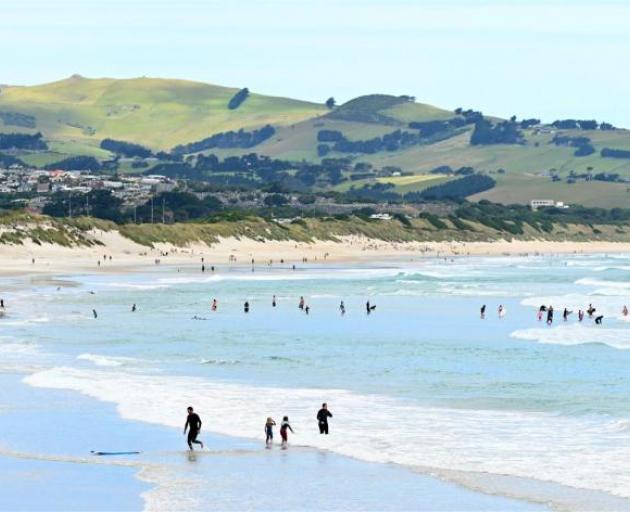
Shake the sand out of your togs and buy some new sun screen - great beach weather may be on the horizon.
Sea temperatures along the Otago and Canterbury coastline have risen ‘‘well above average’’, prompting Niwa to declare a marine heatwave.
Meteorologist Ben Noll said water temperatures have ranged from 1.1degC to 1.4degC above average for November, and daily sea surface temperatures were more than 3degC above average around the western and northern North Island and eastern South Island over the past week.
Marine heatwave conditions, classified when the sea temperature was above the 90th percentile for at least five days, had been observed in waters offshore of all regions of New Zealand.

‘‘Frequent patterns of high pressure near and south of New Zealand during November, owing to La Nina, have caused more frequent subtropical, northeasterly winds than normal.
‘‘Reduced wind speeds through the month have prevented colder, subsurface ocean waters from getting mixed up to the surface.
‘‘In addition, sunshine has generally been above normal, which has helped to heat the ocean surface.’’
Mr Noll said that marine heatwaves were becoming increasingly frequent in a warmer climate.
Between 2010 and 2019, 963 marine heatwave days were observed in the New Zealand region, compared with 366 between 2000 and 2009.
While balmier seas might be good for beachgoers, marine heatwaves have also proven to have a severe effect on ocean ecosystems and industries that rely on them.
In the 2017-18 event, glaciers melted as some pockets of ocean off the South Island’s west coast warmed to 6degC above average, while elsewhere, mussel beds suffered cascading losses and vineyards had early harvests.
Climate scientist Prof Jim Salinger said La Nina meant New Zealanders could count on widespread heat over the next few months.
As well, the balmy conditions could spell more bad news for New Zealand’s shrinking glaciers.
‘‘Although there’s been plentiful seasonal snow, especially around the southern lakes area, that will melt very quickly and then we’ll see the melting eat into the permanent snow and ice later in summer,’’ he said.
Mr Noll said Niwa’s Seasonal Climate Outlook for summer would be released today.
- Additional reporting: The New Zealand Herald












